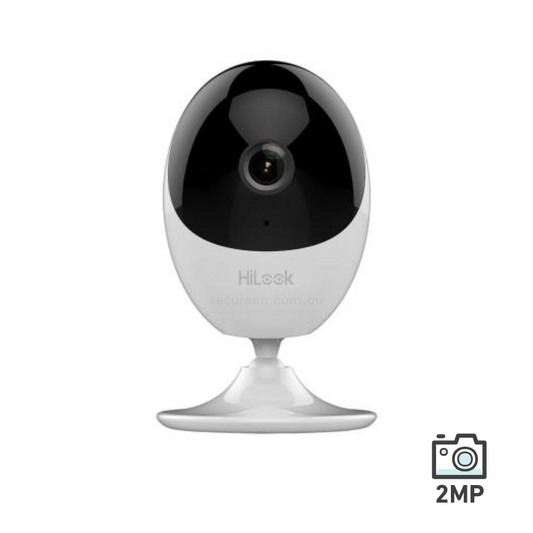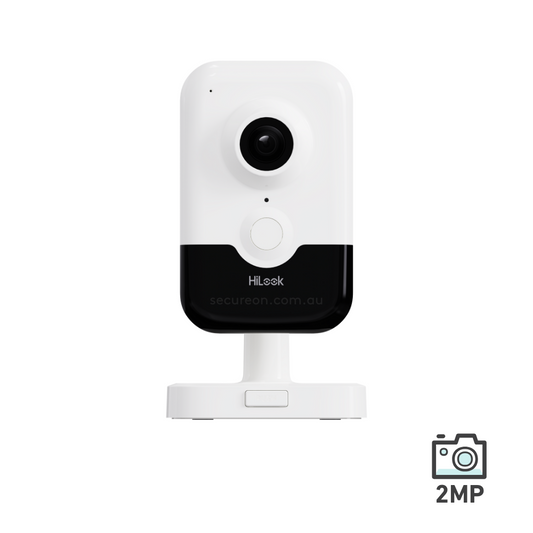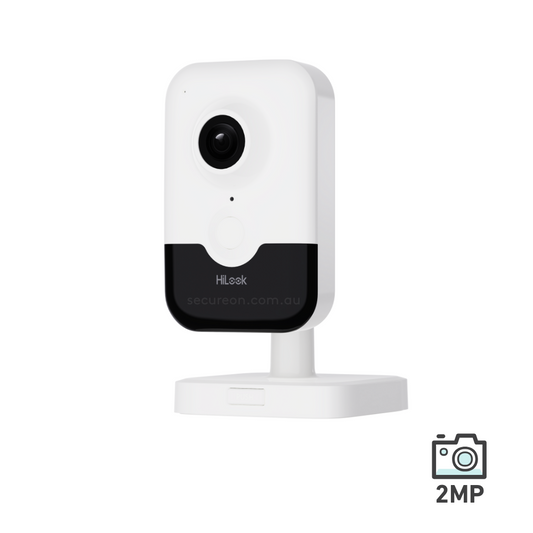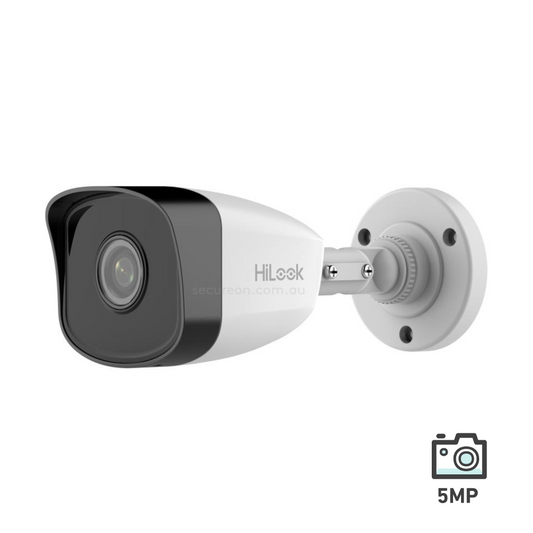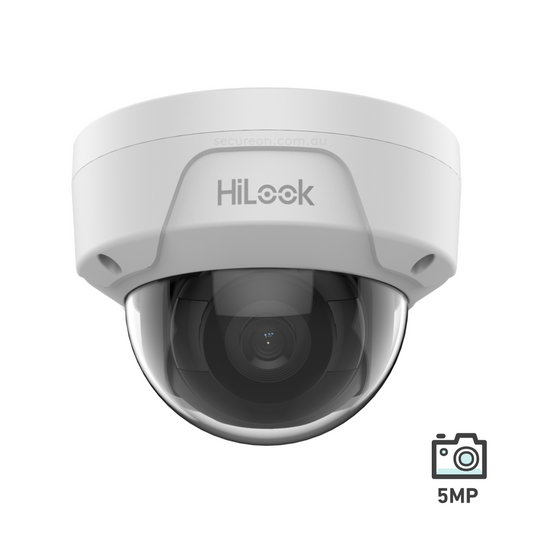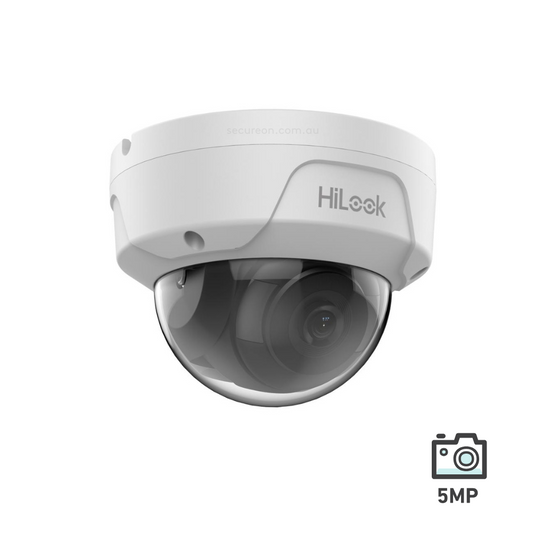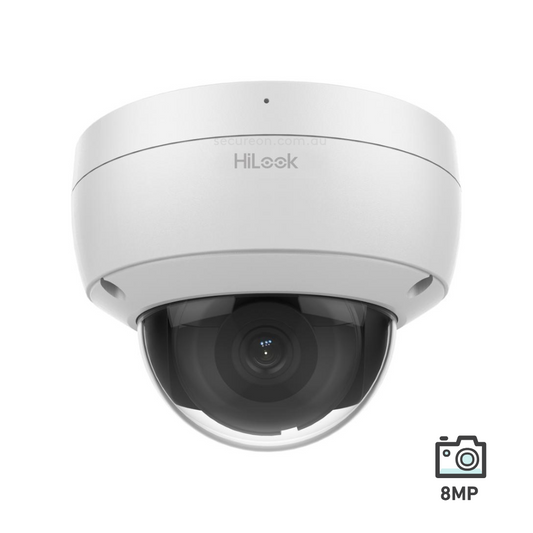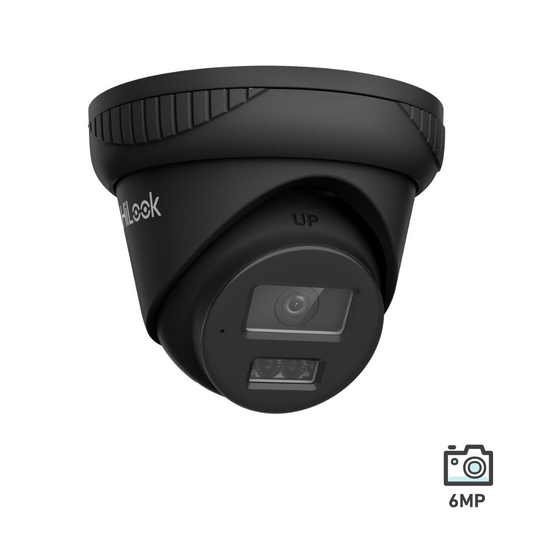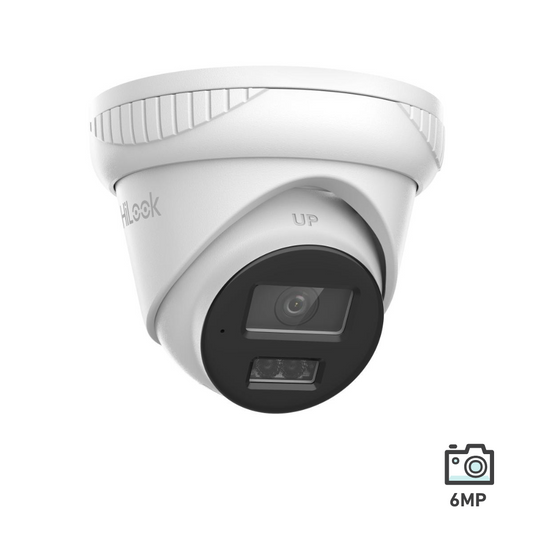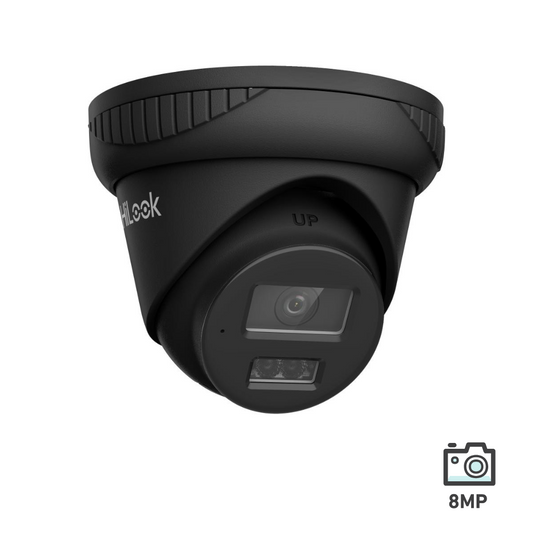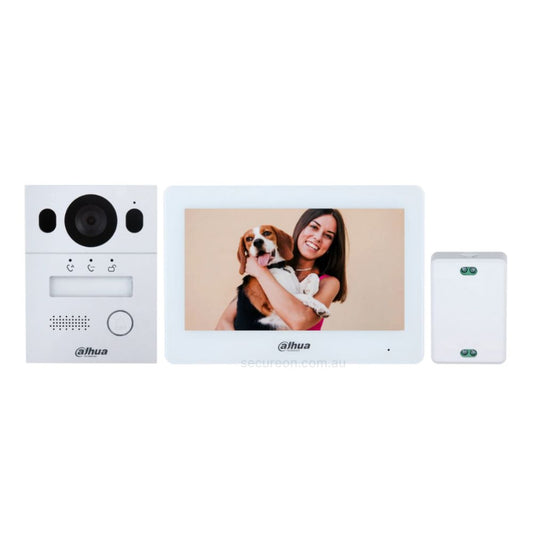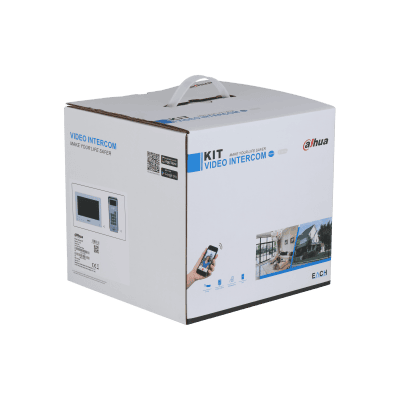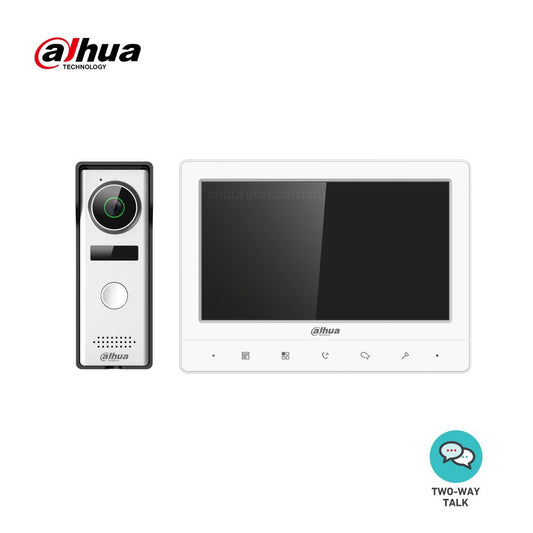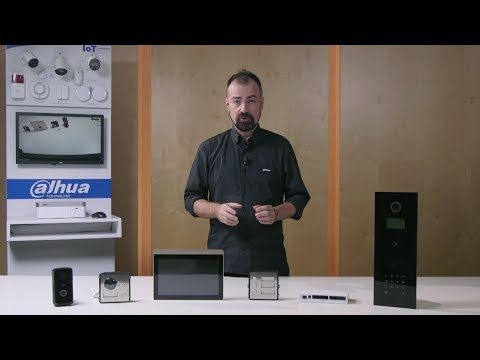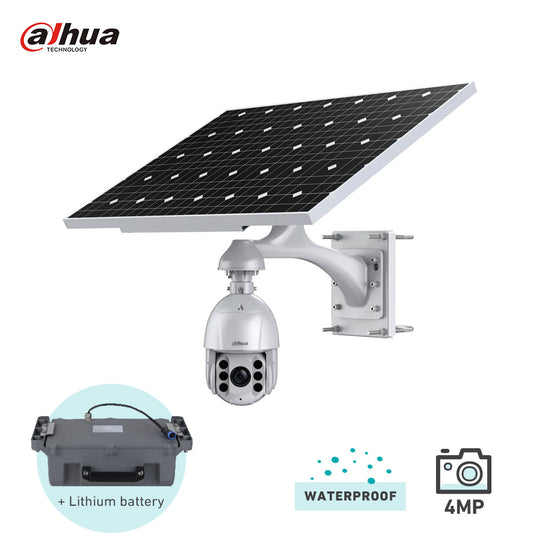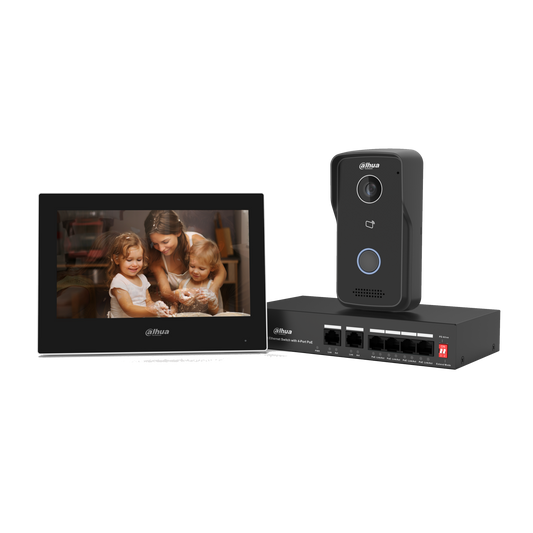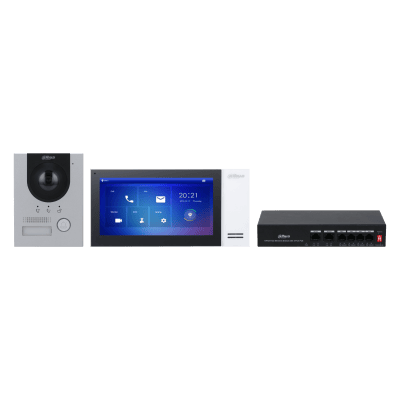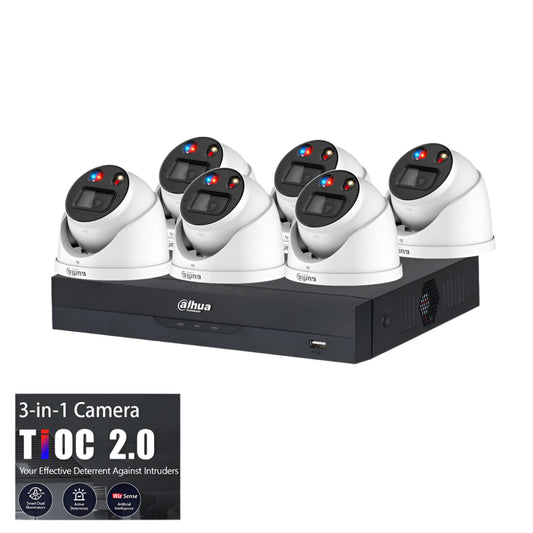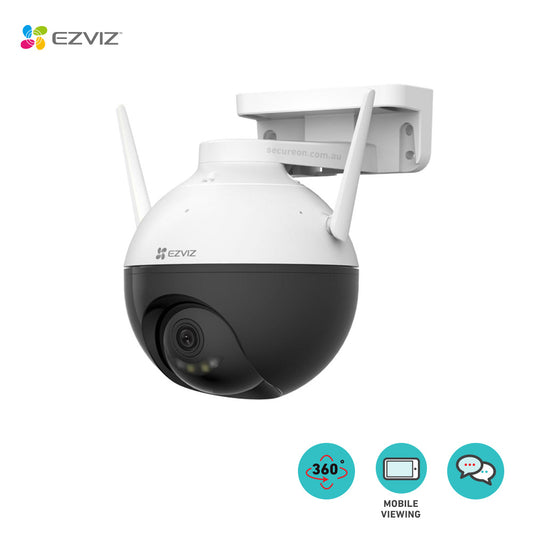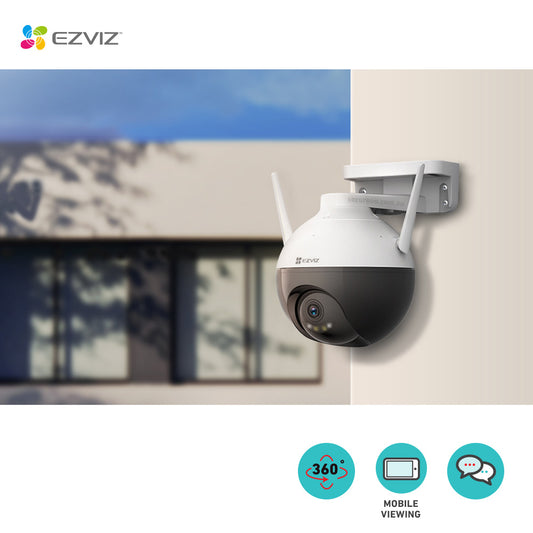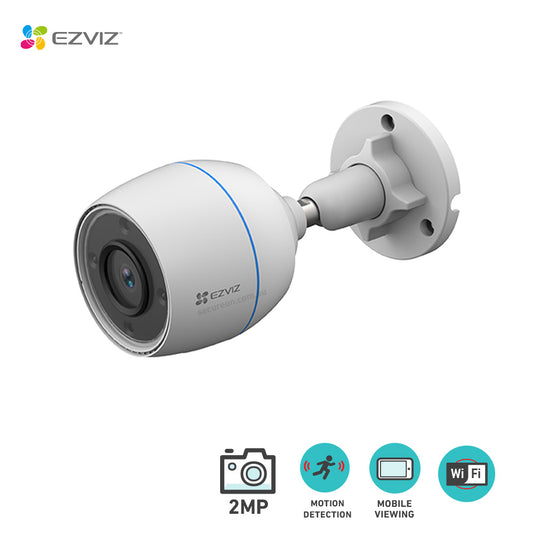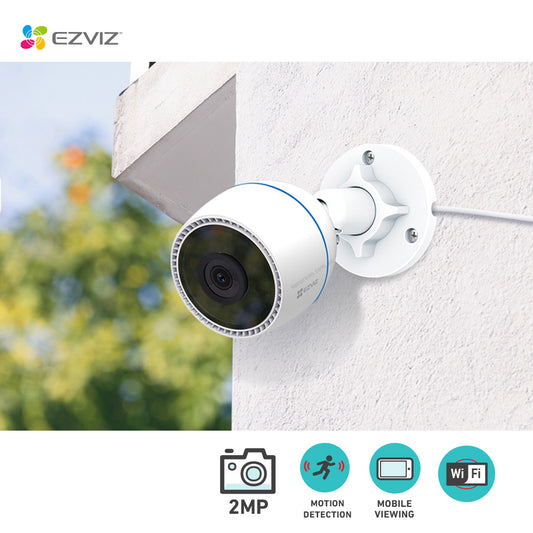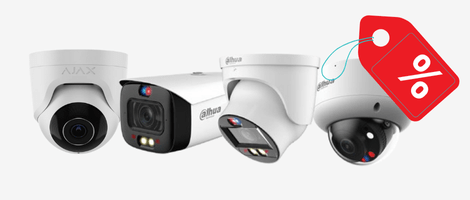Security System Glossary
Knowing the terminology is helpful to identify which surveillance camera or a security system that suits your application. In this page you will find a glossary of common and not so common terms in the CCTV industry.
We update this list often - however if you can't find what you're looking for here, please give us a call:
Secure On DIY CCTV Shop 1300 888 767
1080P
1080p (1920×1080 px: also known as Full HD, is a set of HD High Resolution Video modes characterized by 1,920 pixels displayed across the screen horizontally and 1,080 pixels down the screen vertically; the p stands for progressive scan, i.e. non-interlaced. The term usually assumes a widescreen aspect ratio of 16:9, implying a resolution of 2.1 megapixels. It is often marketed as full HD, to contrast 1080p with 720p resolution.
4 Megapixel
4 Megapixel Cameras security cameras that are capable of providing video resolutions up to 2560 x 1440 pixels which is 30% greater than HD1080p.
4K Resolution
This refers to one of two resolutions. 3840 x 2160, or 4096 x 2160. It is 4 times the resolution of 1080p. This will also allow much higher zoom rates on stills taken from any video clips.
5 Megapixel
5 Megapixel CCTV cameras are capable of resolutions up to 2560 x 1920. These cameras do have a different aspect ratio than 4MP, however. So there is a slight trade off.
720P
720p refers to an image resolution of 1280 pixels wide by 720 pixels tall. Originally a standard for HD (high-definition) television, it can refer to the resolution of video content, the recording capability of a video camera.
8 Megapixel
These are cameras that are capable of resolutions up to 3264 x 2448. This resolution is creeping up on the low end of 4K, and about to breech the high end of 2K resolutions.
960H
960H is a resolution which offers 400% higher image quality as compare to CIF resolution. 960H resolution is 960p (horizontal) x 576p (vertical). This is also known as WD1 resolution.
960P
An image resolution of 1280 pixels wide by 960 pixels tall. It can refer to the resolution of video content or the recording capability of a video camera.
A
ActiveX
ActiveX is a standard that enables software components to interact with one another in a networked environment, regardless of the language(s) used to create them. Web browsers may come into contact with ActiveX controls, ActiveX documents, and ActiveX scripts. ActiveX controls are often downloaded and installed automatically as required.
AGC
Automatic Gain Control automatically increases the video signal in low light conditions. In modern days AGC is available in most of the cameras
AHD
Analog high definition closed-circuit television video surveillance standard that uses coax cable to transmit HD video from security cameras to DVRs. AHD supports 720p, 1080p(2MP), 4MP, 5MP and 8MP HD video resolutions.
Alarm Inputs/Outputs
This can be a physical wired device like PIR Sensor, Door sensor, Glass break sensor, Smoke sensor etc., that recognize any suspicious activity that triggers alarm output such as sending e-Mails and uploading video on FTP server. Alarm inputs on a DVR, XVR or NVR can be used for connecting additional devices.
Analog
In CCTV, analog refers to a Camera Video Format. This refers to systems and components that use the Video standard NTSC/PAL composite video formats. New technology has allowed Analog to attain high resolutions which are reffered to as HD Analog or HDCCTV. Current HD Resolutions are up to 8MP as of 2019.
Angle of View
The angular extent of a given scene that is imaged by a camera. It is used interchangeably with the more general term field of view, or FOV. Angle of view is generally describe in degrees such as 90°, 75°, etc. and can be determined in width and height of view.
Aperture
Aperture refers to F Stop value of a lens. It is the area of the aperture that determines the amount of light allowed to enter the Image sensor. The lower the F – stop number the more light it is able to absorb, f 1.0 means it can work under low (light) Lux level.
AI (Artificial Intelligence)
Artificial intelligence for video surveillance utilizes computer software programs that analyze the images from Surveillance Cameras in order to recognize humans, vehicles or objects. Common AI functions include “Face Detection”, “Left Baggage Detection” and “Line Crossing” among others.
Aspect Ratio
The ratio of the vertical to the horizontal image size. This is usually 4:3 for analog video. A widescreen monitor typically has a 16:9 video format option.
AVI
An acronym for Audio Video Interleaved. This is a typical video format used in the PC world that can be read by a variety of standard programs. Some DVR manufacturers can export video to AVI files for easy review in a standard PC.
AWB
Auto White Balance feature on color cameras whereby the camera constantly monitors the light and adjusts its color to maintain white areas.
B
Backlit
An object illuminated from behind such as a CCTV Sensor. This can be helpful when working in darkened rooms. Also known as BLC or Back Light Compensation in CCTV Cameras.
Back Up
In CCTV DVR context backup refers to saving a selected clip of video to an external device for the purpose of reviewing the clip in a standard PC. This is also called as Export
Bandwidth
Device bandwidth is the range of signal frequencies that a piece of audio or video equipment can encode or decode (the operating frequency). Video uses a wider/higher frequency range than audio, thus requires a wider bandwidth.
Bit Rate
Bit rate is measured in bits per second. In IP video it usually refers to the bit rate from an IP camera. Controlling the bit rate controls the bandwidth needed to transfer data from the camera. The camera processor will automatically limit the maximum bit rate sent from the camera to the bit rate setting selected.
Bit
Individual parts of data communication. A bit is the smallest part of the overall data stream. Serial communication is measured in bits per second (RS-232, RS-485, etc.).
BitVision
The mobile app for all current STOiC DVRs. This is available on both iOS and Android. A more stable and easy to use version of FreeIP. It can be found on the App Store as well as the Google Play Store, depending on your mobile OS of choice.
BNC
This is the standard connector type used in CCTV. It provides an easy snap-on connection for a coax cable. What BNC stands for is less clear. Some say it means British Naval Connector. Others attribute it to the type and the inventor; Bayonet Neil Councilman.
C
Camera
This is the basic video collection device that has many forms and configurations. Some are: box cameras (require a separate lens), bullet cameras (slim line all in one construction), dome camera (all in one in a dome design), PTZ camera (mounted on a PTZ platform device), PTZ dome (all in one package). An IP or HD camera can be any of these and connect directly to a network.
CCTV
An acronym for Closed Circuit Television. Originally this was described as a system with cables directly from cameras to viewing devices with no outside world connections. The Internet has changed all that. Now you can access any DVR with browser software through the Internet. CCTV has continued to be used to refer to surveillance Cameras and systems of all types.
CMS
Control Management Software is a software used for managing multiple systems.
CMS Software
This is an acronym for Central Management Software. This is a generic term used to indicate the installable remote software packages provided by any DVR manufacturer. Each manufacturer has a specific name for their CMS product.
CODEC
This stands for Compressor/De-compressor. Some people call it encoder/decoder. This refers to the software that compresses or decompresses the video.
Compression
Video must be compressed in size in order to make it manageable in the record and remote transmit functions. Typical compression standards include H.264 / M-JPEG & MPEG-4. Some DVR manufacturers use proprietary compression methods that are usually modified versions of the standards.
Contrast
Contrast is the difference in the color and brightness of the object and other objects within the same field of view.
Contrast Ratio
The ratio between white and black. The larger the contrast ratio the greater the ability of a projector to show subtle color details and tolerate extraneous room light. There are two methods used by the projection industry: 1) Full On/Off contrast measures the ratio of the light output of an all white image (full on) and the light output of an all-black (full off) image. 2) ANSI contrast is measured with a pattern of 16 alternating black and white rectangles. The average light output from the white rectangles is divided by the average light output of the black rectangles to determine the ANSI contrast ratio. When comparing the contrast ratio of projectors make sure you are comparing the same type of contrast. Full On/Off contrast will always be a larger number than ANSI contrast for the same projector.
Covert Camera
A covert camera is a camera that is not visible or noticeable. It is intentionally obscured from view and often used for surveillance of employees. Covert Cameras can be hidden in a variety of devices, including PIR Sensors, Smoke Detectors etc. These Cameras are also referred to as Hidden Cameras, Nanny Cameras and Concealed Cameras.
CVBS
CVBS is composite video base band signal for the security camera market. This is what is considered original analog standard definition video cameras. Those Analog security cameras are not high definition and capped off at 960h 700 analog tv lines resolution.
CVI
HD-CVI (High Definition Composite Video Interface). This video format enabled analog CCTV signals to move into the high-definition range. Prior to this, it was limited to 960h.
D
DDNS
DDNS stands for dynamic DNS, or more specifically dynamic Domain Name System. It’s a service that maps internet domain names to IP addresses. DDNS is commonly used for NVR’s, DVR’s and IP Cameras when attempting to remotely connect to your system.
Depth of Field
This is the in-focus range of the image produced by the lens. Objects in the focus area are clear. They will become less clear as they get closer to, or further away from the camera. The distance of the area of clear focus is the depth of field.
DHCP
This is an acronym for Dynamic Host Configuration Protocol. This is a function that allows a network to automatically assign an IP address to a PC when the user logs on to the system. All devices on a network require an IP address. DHCP does this automatically. The alternative is to manually enter a static IP address in each device.
Digital Zoom
This refers to enlarging a portion of an image by adding additional pixels within the image to fill the larger area. It makes the picture area larger at the expense of video quality. The intelligence for this feature can be in a camera or a DVR. The opposite would be Optical Zoom in which a camera physically zooms into an image using all available pixels.
DNS
Domain Name System matches internet computer names to IP numbers.
Domain
A number of computer devices administered as a group. A Domain server is set up and maintained by the network administrator (the person in charge of the network).
Driver
Device Driver is a software program that allows a computer to communicate with a peripheral. You need the appropriate driver to allow your printer to work with your system. Many drivers are available on a PC as part of the operating system. However, don’t depend on this as drivers for devices newer than the operating system will not be installed. You typically get a copy of the driver with the purchased device. The manufacturer’s web site is a common place to get the latest available drivers for a device. Drivers are often referred to as DLLs (dynamic link library). Virtually all drivers used in CCTV devices are proprietary. So once you get away from the standard stuff you have to rely upon the manufacturer’s good will for interface help.
DVR
An acronym for Digital Video Recorder, this is a manufacturer designed hardware platform for recording. It may have many functions like Recorder/ Multiplexer/ Remote surveillance/ Alert notification. It is a proprietary design that is unique to an individual manufacturer. DVR’s are commonly used in HD CCTV and generally will have BNC Inputs. DVR’s range from 4 Channel to 32 Channel. New versions of HD DVR’s which support multiple HD Formats are called XVR’s.
Dynamic IP
This refers to IP addresses that are automatically assigned to a network device when the user logs on to the system. See DHCP.
E
Ethernet
Ethernet is a family of frame-based computer networking technologies for local area networks (LANs). The name comes from the physical concept of the ether. It defines a number of wiring and signaling standards for the Physical Layer of the OSI networking model as well as a common addressing format and Media Access Control at the Data Link Layer.
F
Field
Each complete video image in NTSC/PAL (frame) is composed of two fields. One field consists of the odd numbered lines in the frame and the other field consists of the even numbered lines. When viewed together in rapid succession, these lines form the complete frame image. The NTSC and PAL formats called for double scanning fields to reduce the visual flicker that was common on early TV monitors. Monitors got better over time but the “standard” did not change. Each individual field independently forms a picture.
Focal Length
The distance between the secondary principal point in the lens and the plane of the imaging device. The longer the focal length, the narrower is the angle of view.
Frame Rate
Frame rate, also known as frame frequency and frames per second (FPS), is the frequency (rate) at which an imaging device produces unique consecutive images called frames.
FTP
File Transfer Protocol transfer documents between different types of computers.
G
Gateway
This is the hardware/software device used to connect LANs with dissimilar operating systems. The gateway often refers to an Internet connection. The gateway is a single device that provides a single IP address to the outside world and routes traffic to the appropriate internal IP addresses.
GUI
An acronym for Graphical User Interface. This is the visual display that the operator uses to use the system. GUI makes NVR function user-friendly.
H
H.265 (H.265+)
This video compression method is an improvement over earlier formats like JPEG, M-Jpeg, MPEG-4 providing smaller average usable file sizes. Most of our IP Cameras and NVR’s allow for H.264, H.264+, H.265 and H.265+.
HDD
An acronym for Hard Disk Drive.
HDMI
Acronym for High Definition Multimedia Interface. This is a single cable connection used in consumer electronics providing a high level of clarity. This type of connection is now common in CCTV products, and is capable of higher resolutions than VGA or Composite.
I
Interlaced Video
Also known as Interlaced Scan, is a technique for doubling the perceived frame rate of a video display without consuming extra bandwidth. The interlaced signal contains two fields of a video frame captured at two different times. This enhances motion perception to the viewer.
IP (IP Address)
An acronym for Internet Protocol. IP is a unique number/ IP address assigned by an internet authority that identifies a computer on the internet. The number consists of four groups of numbers between 0 and 255, separated by periods (dots). For example 192.168.1.254 an IP address.
IP Cameras
These are IP based video cameras using IP networking as their basis rather than the traditional video signal used in broadcast and closed circuit systems. Migration to IP Cameras increased due to higher resolution capabilities as well as capabilities. However, HD Analog Cameras have bridged the gap on resolution dramatically (Currently up to 8MP).
IP66 protection
This stands for Ingress Protection. It is a measure of the ability of an enclosure to resist dust and water. It is expressed (usually) as two numbers as in IP66. This rating would mean your outdoor dome enclosure is totally resistant to dust and water entry.
IP67 protection
IP67 cameras passed a series of strict test on dust and soak. The camera would have dust-proof function, and the enclosure can works normal after soaking in 1 m deep water for 30 minutes.
IR
Infra-Red light is the wavelength of light produced below the visible part of the spectrum. Humans can’t see this light but cameras can. IR cameras use Infra-Red LEDs to light an area and provide usable (black and white) images in total darkness.
IR Cut Filter
IR light can distort colors in CCD and CMOS cameras. An IR filter is often used in cameras to filter out IR light during bright daylight conditions. An IR cut filter is automatically removed at low light to allow the camera to take advantage of IR light in lower light conditions. The camera usually switches to black and white operation at this time since B/W works better than color in low light. However, new Starlight Cameras have emerged as a way for Cameras to stay in color in extremely low light levels.
J
JPEG
A Format for compressing image files.
L
LAN
An acronym for Local Area Network. This could be as small as a two computer system, or, it could incorporate hundreds of users in a campus environment. It is local in that there is a direct wire connection between all parts of the network.
LCD
LCD stands for Liquid Crystal Display. The majority of modern monitors use this to provide their display.
Legacy
A term used to describe hardware that may be obsolete, but still being used and somewhat supported.
LED
A LED is a Light Emitting Diode.
Live Video
Live displays current activity. This can be at the camera location or at a remote site connected to the cameras through the Internet.
LUX
It measures the amount of uniform light that falls on one square meter. Security camera specs use the lux to indicate how much light they require to operate, with lower lux levels indicating a camera as more effective in lower ambient light.
M
MJPEG
A Format for compressing image files.
N
Network
Allows two or more computers to exchange information quickly and easily. Also, in surveillance, a term used to describe IP Cameras (IP Network Cameras).
Network Bandwidth
This refers to the total amount of network traffic that is allowed on the network. A typical LAN connection is 100Mbps. All devices on that leg of the network share the available bandwidth. WAN traffic is much slower because of the slower connection to the outside world.
Network Switch
A hardware device used to connect multiple devices to a network. These devices usually have from four to 32 inputs. They can be connected together to make any size network.
NTSC
National Television Systems Committee of the Electronics Industries Association (EIA) which prepared the NTSC format specifications approved by the Federal Communications Commission, for US commercial color broadcasting. `NTSC’ also refers to a color television format having 525 scan lines, a field frequency of 60 Hz, a broadcast bandwidth of 4 MHz, line frequency of 15.75 KHz, frame frequency of 1/30 of a second, and a color subcarrier frequency of 3.58 MHz. NTSC is the North American Standard for CCTV.
O
ONVIF
Acronym for Open Network Video Interface Forum. This is a growing standard for IP camera interface. Cameras such as Stoic Technologies IP Cameras and Tru View IP Cameras use ONVIF protocol. They are compatible with many major brand like Axis, ACTi, Bosch, CNB, Dahua, Everfocus, Hikvision, Honeywell, Panasonic, Pelco, Samsung, Hanwha, Sony, Uniview, Vivotek and many more.
Operating Humidity
The device can operate is the humidity range.
Operating Temperature
The device can operate is the relative operating temperature range.
Optical Zoom
Used to describe a method of using the lens of the camera to enhance and enlarge the image, rather than digital means. Pixelation does not come into play with this method. This is completely dependent on the camera itself. Optical Zoom allows for complete use of pixels available.
OSD
Acronym for On Screen Display.
P
P2P
Peer to Peer is a network where all users can share information equally. You share the information on each computer’s drives with all the other computers in the workgroup. The workstations (each PC) communicate directly with each other.
PAL
Phase Alternation Line; the European standard color television system, except for France. PAL’s image format is 4:3, 625 lines, 50 Hz and 4 MHz video bandwidth with a total 8 MHz of video channel width.
Password or Passcode
Is the act of establishing or confirming something (or someone) as authentic i.e. that claims made by or about the subject are true.
Perimeter Protection
With deep learning algorithm, Dahua Perimeter Protection technology can recognize human and vehicle accurately. In restricted area (such as pedestrian area and vehicle area), the false alarms of intelligent detection based on target type (such as tripwire, intrusion, fast moving, parking detection, loitering detection and gathering detection) are largely reduced.
Ping
Ping is a computer network administration utility used to test whether a particular host is reachable across an Internet Protocol (IP) network and to measure the round-trip time for packets sent from the local host to a destination computer, including the local host’s own interfaces.
Pinhole Lens
Lens used for applications where the camera/lens must be hidden. Front of lens has a small opening to allow the lens to view an entire room through a small hole in a wall.
Plug and Play
Plug n Play basically means that the product is pre-configured in such a way it may require 0 configurations by the end user or system integrator.
POE
Acronym for Power over Ethernet. This is a network device that provides power to a device using one of the CAT-5 cable twisted pairs. This is an installation advantage eliminating the need for a locally installed AC outlet.
PPPoE
It means assigning a changeable IP address to a DVR to connect DVRs at remote places.
PTZ
Pan Tilt Zoom a device that can be remotely controlled to provide both vertical and horizontal movement for a camera, with zoom. This is a movable mechanical base for a camera. PTZ Cameras are used to actively search a wide area up to 360 degrees and zoom in to a point of interest.
PTZ Dome
A fully contained PTZ mechanism and camera installed in the same dome housing.
R
Router
This is the hardware device that provides a gateway to the Internet
S
SATA
Acronym for Serial Advanced Technology Attachment. This is the cable that connects a PC motherboard to a disk drive or optical drive. It is a thin round cable providing serial communication. This is a newer technology than traditional parallel connections (ribbon cables). So you must know what type of drive each DVR requires.
SDI
(HD-SDI) Serial Digital Interface. The first HD Analog format introduced to the video security market. HD–SDI solutions are capable of transmitting 720p or 1080p resolution video over standard coaxial cable.
Smart IR
Technology to auto-adjust the intensity of built in infrared LEDs to compensate for objects within close distances to the camera lens.
Signal-to-noise ratio (abbreviated SNR or S/N) is a measure used in science and engineering that compares the level of a desired signal to the level of background noise. SNR is defined as the ratio of signal power to the noise power, often expressed in decibels.
Smart H.265+ & Smart H.264+
With advanced scene-adaptive rate control algorithm, Dahua smart encoding technology realizes the higher encoding efficiency than H.265 and H.264, provides high-quality video, and reduces the cost of storage and transmission.
SMD Plus (by Dahua)
With intelligent algorithm, Dahua Smart Motion Detection technology can categorize the targets that trigger motion detection and filter the motion detection alarm triggered by non-concerned targets to realise effective and accurate alarm.
Standalone System
A device that runs independently without the need to be connected with other devices
Starlight
Starlight technology was developed by the brand Dahua, mainly applies to the environment of low illuminance, and it can provide clear colorful video. Even in the environment of ultra-low illuminance, the technology can guarantee the good image effect.
Static IP Address
This is the name given to a manually entered IP address. In large networks IP addresses are usually automatically assigned by DHCP.
Subnet Mask
This is a 32 bit binary number used as part of IP addressing. Each octet is expressed as a number between zero and 255. The subnet mask numbers define the network number.
T
TCP/IP
This is an acronym for Transmission Control Protocol/Internet Protocol. This is the most common protocol for communicating through the Internet.
Tour
Refers to PTZ control: You can select a series of cameras, Presets and Patterns into a tour. This will switch from one camera, preset or pattern to another in the order and for the time selected. The result is a tour (the name is derived from a guard tour where the guard physically goes from location to location) of video from a central location.
Transmission Range
Generally refers to the distance a video signal will travel. Transmission ranges vary by technology.
TVI
High Definition Transport Video Interface. It is a digital signal processing and transport technology used to transmit video in HD security cameras and DVRs. HDTV technology was developed by a company named Techpoint. They released the TVI video standard in 2014.
U
USB
Acronym for Universal Serial Bus. This is standard PC hardware. It allows external devices to be easily connected to a PC, DVR, etc. Connected devices are typically hard drives, CD/DVDs and flash drives.
UTC
This is an acronym for Up-The-Coax. This refers to sending telemetry information (PTZ control data) to a PTZ device on the same coax cable that provides the video. The data is transferred during the Vertical Blanking Interval (that wide black line you might see on a rolling image) and does not interfere with the video display. This is especially helpful in installation and allows UTC compatible cameras and DVR’s to communicate with each other without having to run an additional cable. Our STOiC XVR’s are all UTC Supported.
V
Vari-Focal Lens (Variable Focus)
This is a lens with a manually adjusted focal length. The field of view can be adjusted easily after the camera is installed. This simplifies installation with one lens type accommodating multiple locations. See Also: Motorized Zoom
VMS
VMS stands for Video Management System. A VMS allows for managing several IP Cameras, NVR’s and DVR’s over a single platform.
W
WAN
Acronym for Wide Area Network. A WAN is typically a number of individual LANs connected together through telecommunication links (ISDN, T1, DSL, etc.) either directly, or, through the Internet.
WDR
Acronym for Wide Dynamic Range. This refers to cameras. This is a high end feature that provides clear details in the environment of strong brightness contrast, providing better image detail in low light conditions. The bright and dark area can get clear video even in high brightness environment or with backlight shadow. With WDR the camera view will be much improved showing detail in both light and dark areas.
WiFi
Is a WLAN (Wireless Local Area Network) technology. It provides short-range wireless high-speed data connections between IP cameras to nearby Wi-Fi access points. Wi-Fi has different types of encryptions standard WPA / WPA2 / WEP for secured access. There are variants of Wi-Fi, 802.11g, is capable of providing speeds of up to 54Mbps and is backwards compatible with 802.11b.
WizSense Series
Launched by Dahua Technology, WizSense is a series of AI products and solutions that adopt independent AI chip and deep learning algorithm. It focuses on human and vehicle with high accuracy, enabling users to fast act on defined targets. Based on Dahua's advanced technologies, WizSense makes your video intelligent, simple and inclusive.
X
XVR
An XVR is a DVR that can support multiple formats. HD XVR’s can support AHD, TVI, CVI, CVBS and IP simultaneously. They also have an auto detect feature so cameras from multiple formats can be recognized instantly without having to switch any settings.
